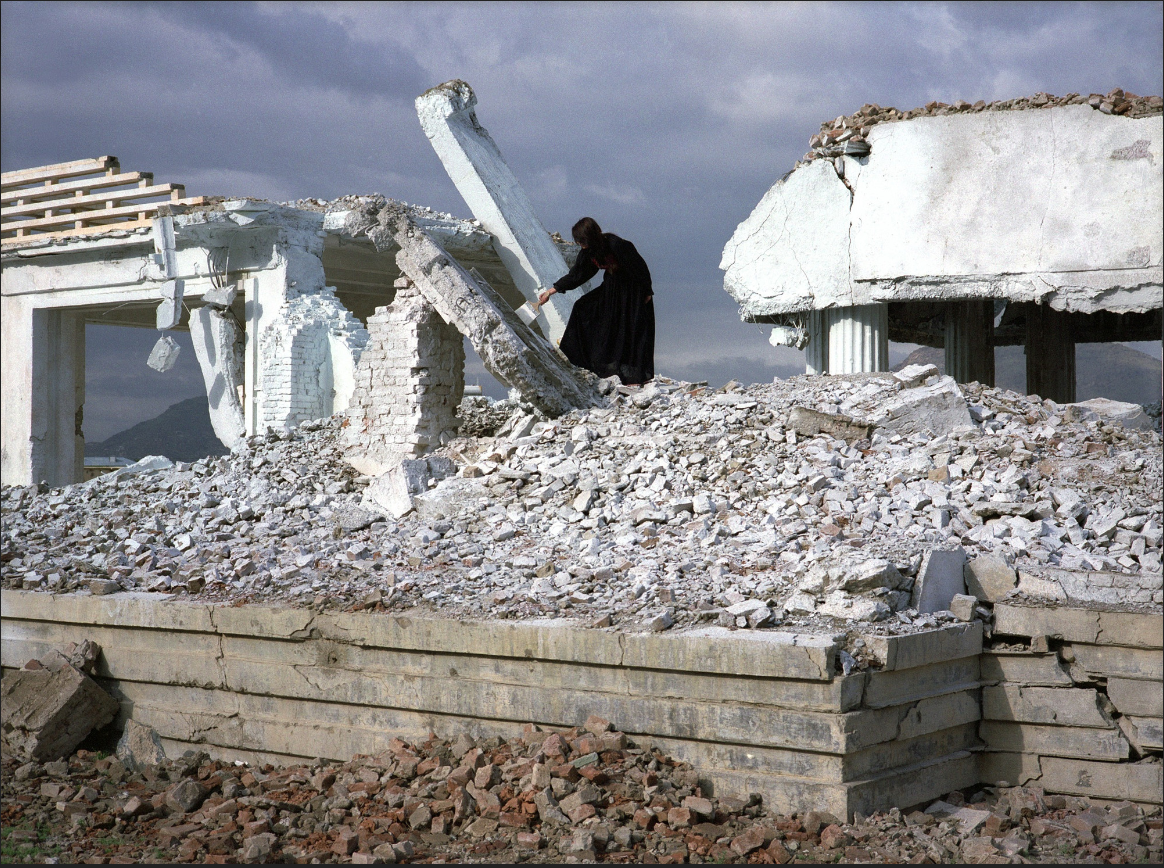/ Silence, Dispossession, and Hope: The Artistic World of Lida Abdul / Marcaz
Silence, Dispossession, and Hope: The Artistic World of Lida Abdul
Marcaz
Apr 24, 2023
Lida Abdul is a prominent contemporary artist hailing from Afghanistan, born in Kabul in 1973. Her family fled Afghanistan following the Soviet invasion in 1979 and lived as refugees in India and Germany before settling in the United States. Abdul received a Bachelor of Arts in Political Science in 1997, a Bachelor of Arts in Philosophy in 1998 from California State University, Fullerton, and an MFA from the University of California, Irvine, in 2000. Based on her experiences, Abdul considers herself a nomadic artist, and her films, videos, and installations are permeated with themes of cultural identity, migration, and the processes of destruction and displacement that have marked Afghanistan's recent history.

What We Saw Upon Awakening, 16 mm film transferred onto DVD, colour, sound, 6:53. 2006

White House, 16mm film transferred to video (color, silent), 4:58 min. 2005
In her video installation "Dome" (2005), Abdul captures a chance encounter with a young boy in a war-torn landscape. The boy stands in front of a roofless building, staring mesmerized at the blue sky while spinning in circles, creating a sense of disorientation in the viewer. This poignant scene serves as a metaphor for the losses of self and place that occur during war and displacement while also demonstrating the human capacity for hope. Similarly, in her film "White House" (2005), first shown at the 51st Venice Biennale, the artist presents a glimpse into the three-day process of painting the ruins of a classical structure white using only a paintbrush, paint, and her own considerable exertion. Although the act seems meaningless, the symbolism of rebirth and criticism towards the War on Terror and the United States' violent efforts to erase the country's past is evident. The video ends with a playful herd of goats exploring the whitewashed ruins. Despite the formal beauty of the video, "White House" is a protest and statement against the damaging effects of American and Russian imperialism and violence on a nation's people and history.
Another notable work in Abdul's oeuvre is "In Transit" (2008), which skillfully showcases the juxtaposition of harsh reality and hope for the future in the midst of devastation caused by war. This video work portrays a group of young boys playing in a bombed-out Soviet warplane, trying to fly the plane like a kite with the help of cotton and ropes. Instead of using pathos to evoke emotions, she uses the innocence of children and their everyday actions produced in relation to the environment that surrounds them, as both a reflection of the recent past and as a source of optimism for the future. The constant presence of ruins in Abdul's work, whether in a literal or poetic sense, also highlights a cornerstone of Abdul's artistic vision and belief that anything is possible when everything is lost.
Abdul's work has had a significant impact on the art world and beyond. Through her unique and powerful message, she has become an instrumental figure in raising awareness of the impact of war and conflict on Afghan society, and highlighting the resilience and creativity of Afghan culture. Her installations are a testament to the power of art to transcend borders and language, and to communicate universal human experiences that resonate with people from all walks of life. Abdul's work has been exhibited in major art events and galleries around the world, including the Venice Biennale, the Museum of Modern Art in New York, and the Guggenheim Museum.
Furthermore, Abdul's art has contributed to the discourse on the intersection of art and politics. By addressing complex political issues such as war, displacement, and cultural identity, her work prompts viewers to engage in critical thinking and reflection. Through her films, videos, and installations, Abdul challenges viewers to confront uncomfortable truths and question the status quo. She invites them to empathize with the experiences of individuals affected by war and violence and to consider their own role in shaping a more just and peaceful world.